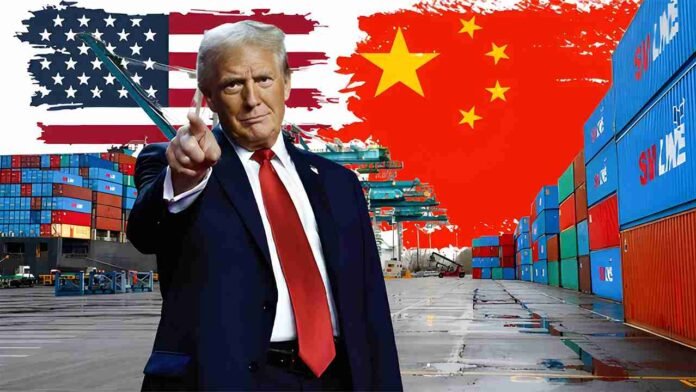Trump Escalates Trade War With 100% Tariff on China
In a stunning move, U.S. President Donald Trump has announced a 100% tariff on all Chinese imports starting on November 1. The escalation follows Beijing’s new export restrictions on rare-earth minerals—vital components in advanced U.S. industries including semiconductors, electric vehicles, and defense systems. Trump called China’s actions “extraordinarily aggressive” and warned the tariffs could take effect sooner if Beijing continues its restrictive trade stance.
China’s Rare-Earth Limits Hit U.S. Industry and Defence
Beijing’s rare-earth export controls have struck a direct blow at America’s industrial and defence foundations. These rare materials are essential for missile systems, fighter jets, and high-tech manufacturing. While Washington has invested $400 million in domestic producer MP Materials, the U.S. remains largely dependent on Chinese supply chains. Trump’s tariff decision underscores how vulnerable America still is in strategic mineral resources.
A Mix of Retaliation and Political Strategy
The tariff surge is both retaliation and political maneuvering. Trump, known for his “America First” trade stance, is signaling strength to his voter base ahead of key elections. By framing China’s restrictions as a threat to U.S. sovereignty, he’s reinforcing his tough-on-trade image. Analysts suggest this move isn’t just about tariffs but about forcing Beijing to negotiate on Washington’s terms.
Optics and Timing: Power and Diplomacy in Motion
The announcement came the same day Trump touted progress on a Middle East peace agreement, highlighting his attempt to project power on multiple fronts. The message is clear: America will pair diplomacy with economic toughness. By combining foreign policy wins with aggressive trade measures, Trump aims to portray global leadership at a moment of domestic uncertainty and economic tension.
Wall Street reacted sharply to Trump’s tariff threat. The Dow Jones tumbled 878 points, the S&P 500 slid 2.7%, and the Nasdaq dropped 3.5%—its steepest fall since April. Major tech firms like Nvidia, AMD, and Tesla saw heavy losses as investors feared renewed supply-chain disruptions. Analysts warned that escalating trade tensions could rattle global markets just ahead of the crucial holiday retail season.
Financial strategists say the U.S.-China standoff could trigger a wave of volatility across global supply chains. Wall Street’s fear barometer, the CBOE Volatility Index, jumped past 22 to reach its highest level in months. With the U.S. government shutdown extending into its 10th day, investor confidence took a double hit, deepening worries that political and economic uncertainty could derail recovery momentum.
With the APEC summit in South Korea now in doubt, prospects for a Trump-Xi meeting have dimmed. Trump said he sees “no reason” to meet the Chinese president. As both powers dig in, the world braces for another high-stakes confrontation mixing politics, power, and economic pressure. The outcome could reshape global trade, technology access, and diplomatic alliances in the months ahead.
Gaza Ceasefire Begins: Palestinians Return to Ruins, Aid to Resume

